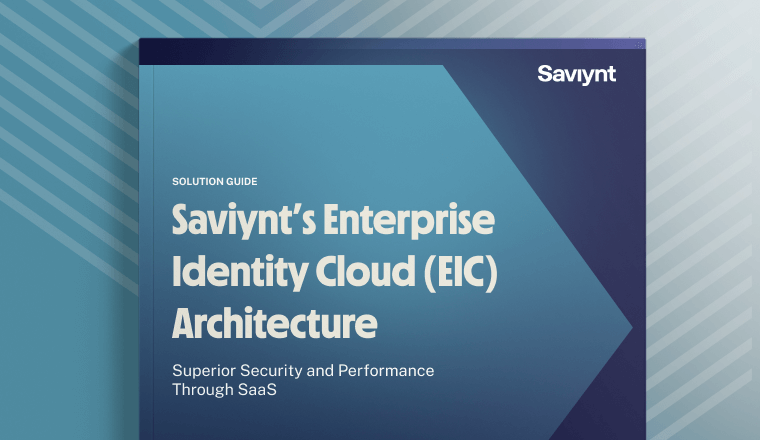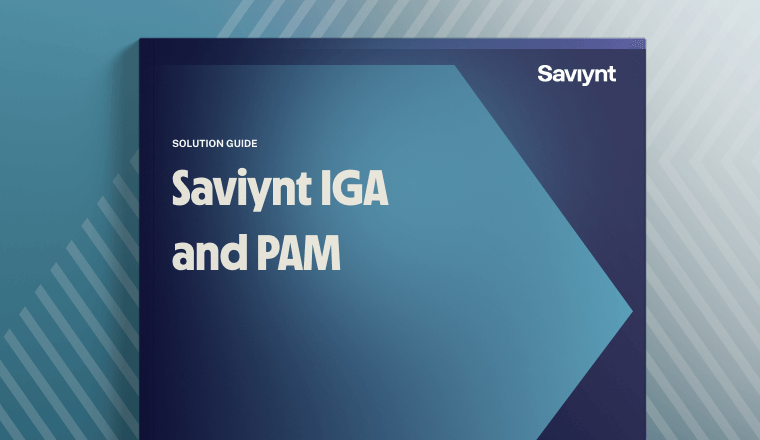What is Identity, Credential, and Access Management (ICAM)?
Several high-profile cybersecurity attacks such as SolarWinds, Microsoft Exchange and the Colonial Pipeline incident highlighted the fact that U.S. public and private sector organizations continue to face malicious cyber activity from nation-state and other malicious actors. In light of this heightened threat activity, U.S. President Biden issued Executive Order 14028 that set new standards and requirements for cybersecurity in all federal information systems. One of the key mandates directs federal agencies to develop a plan to implement Zero-Trust Architectures, which reevaluates risk and trust levels of every digital transaction.
The Executive Order helps move the Federal government to secure cloud services and a zero-trust architecture, and mandates deployment of multifactor authentication and encryption with a specific time period.
What is ICAM?
Identity, Credential, and Access Management (ICAM) is a framework of policies, programs, and technologies used to create and manage digital identities, credentials and access controls to protect an organization’s digital assets and systems. This framework can help government agencies and private sector organizations reduce the risk of cyber attacks by ensuring that the right person is accessing the right information at the right time for the right reason.
ICAM covers three fundamental aspects that protect sensitive information systems and ensure compliance with regulatory requirements. They include:
-
Identity Management – the processes and technologies used to identify, authenticate, and manage subjects in a system, including verifying users’ identities, devices, or procedures when connecting to a network.
-
Credential Management – the creation, distribution, and lifecycle management of credentials used for authentication. Credentials are proof of identity, often in the form of passwords, cryptographic keys, biometrics, or tokens.
-
Access Management – the control and management of access to networks, systems, applications, functions, and data. Access controls determine who or what is allowed to view or use resources based on their identity and authentication status.
ICAM is fundamental to implementing a zero-trust architecture, where trust is never implicitly given and must always be verified.
How can an (ICAM) strategy protect against cyber attacks?
Many federal agencies and private companies alike are using Identity, Credential, and Access Management (ICAM) principles to help them achieve zero trust mandates.
Identity is a fundamental piece of a zero trust strategy. Here are some ways ICAM is used in practice:
-
Single Sign-On (SSO) is an authentication process allowing users to access multiple applications or systems with a single login credential. SSO is a critical element of ICAM that improves user experience and boosts productivity while reducing the risk of password-related security incidents.
-
Multi-Factor Authentication (MFA) requires users to provide two or more verification factors to gain access to a resource, such as something they know (a password), something they have (a token or smart card), and something they are (a fingerprint or other biometric trait).
-
Access Controls can be role-based (RBAC), attribute-based (ABAC), or policy-based. These controls limit access to information based on a user’s role, attributes, or specific policies, ensuring that users only have the minimum necessary permissions.
-
Lifecycle Management refers to managing digital identities throughout their lifecycle, from creation, through updates to deactivation or deletion. These are often complicated and highly manual activities. Having a modern identity management platform platform can help automate many of these processes, ensuring access rights are adjusted or revoked when a user’s role changes or leaves the organization.
-
Provisioning and deprovisioning involves setting up user accounts and providing access permissions when a new employee or contractor joins an organization. Deprovisioning is equally, if not more important, when it comes to reducing cyber risk. All too often people leave or change roles, yet their access permissions remain. when the individual leaves. ICAM solutions reduce overhead and enhance security by automating these processes.
-
Audit and Compliance ensures that organizations are adhering to various regulations stipulating who should have access to specific data, how access should be granted, and how access activities should be logged and audited. Today’s modern identity governance solutions can help federal agencies and other organizations meet mission objectives by automating the management of access rights, usage patterns with AI and ML-powered analytics.
Benefits of Modern Identity, Credential, and Access Management
With cyber crime becoming increasingly malicious and sophisticated, ICAM processes and tools play a crucial role in securing an agency’s data and resources. Effective, secure and efficient ICAM processes form the foundation of a zero trust architecture, which improves an organization’s ability to ensure that the right person is accessing the right information at the right time for the right reason.
Modern Identity, Credential, and Access Management (ICAM) systems offer several benefits to agencies and organizations:
-
Improved Security: By adopting an identity-centric security architecture to minimize the risks of a data breach
-
Reduced Costs: By automating tasks related to identity and access management, and phasing out redundant processes
-
Scalability: By adopting modern platforms that enable continuous compliance, increased efficiency and better agility through automation.
-
Visibility and Auditing: ICAM systems deliver comprehensive logs and reports about who has accessed what resources and when. This supports the creation of audit trails and the identification of potential security issues or breaches.
-
Risk Management: By using analytics to make informed, risk-based access decisions.
-
Enabling Digital Transformation: By converging capabilities on a unified cloud architecture and removing legacy infrastructure silos.
Saviynt & Identity, Credential, and Access Management (ICAM)
ICAM consists of five components: federation, identity management, credential access management, and governance. Within each area, Saviynt and our partners provide key capabilities that can help enhance your existing architecture without needing to rip and replace your entire infrastructure.
With Saviynt Identity Cloud, agencies gain a single platform solution that provides continuous compliance and increased efficiency and agility through automation and intuitive workflows. Powered by a comprehensive identity warehouse and extensive controls library for risk-based compliance and security, Saviynt helps agencies enable zero trust security.
Streamline Identity Governance
Saviynt was built in the cloud, for the cloud and delivers a unified solution for cloud and on-premises environments to ensure a highly efficient and interactive governance program.
Saviynt’s platform offers a Control Exchange with over 200 regulatory, industry standard, and service provider controls available out of the box. We offer connectors with the most-used cloud service providers and applications. This frictionless onboarding enables you to create an authoritative, standardized source of identity with fine-grained entitlements across the entire IT ecosystem.
With Saviynt’s Control Exchange, you have over 200 built-in controls to track access and usage, create key performance indicators, and streamline compliance documentation.
Better Visibility into Who, What, Why, and How
Saviynt enables organizations to merge divergent identity, role, and group definitions across their on-premise, hybrid, and cloud infrastructures to create a single, authoritative identity source. The platform natively integrates with business-critical IaaS and SaaS products, and organizations can limit access beyond the coarse-grained application level and drill down to the “edit/read” level using fine-grained access entitlements.
Saviynt’s analytics streamline the request/review/certify process by aligning with policy controls. The platform alerts users to anomalous requests/access, which an administrator must approve. Our peer- and usage-based analytics enable organizations to maintain “least privilege” controls and prevent SOD violations.
Resources
.png)

